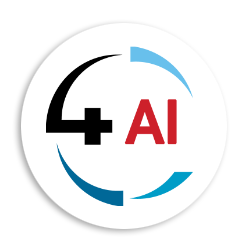Blog - Channel Partner
Building AI Agents with Dynamics 365 Customer Service: From Concept to Deployment

Let’s be honest. AI used to feel like something only tech giants could afford to play with. Now it is sitting right inside Dynamics 365 Customer Service, waiting for you to use it. And the best part? You do not have to be a developer with years of coding experience to make it work.
If you are an indirect reseller, you might be thinking about how this fits into the solutions you offer. If you are an end customer, you might be wondering what it means for your team and your customers. Either way, the idea is the same: AI agents can take your customer service from reactive to proactive, and they can do it faster than you might expect.
What exactly is an AI agent in D365 Customer Service?
An AI agent in Dynamics 365 Customer Service is essentially a smart virtual assistant that can handle customer questions, solve problems, and even trigger workflows without a human having to jump in. It can live in your chat channels, help with email, or even guide customers through self-service portals.
Think of it like that colleague who knows the knowledge base inside out and always has the right answer. Only this colleague never gets tired, never forgets, and can help hundreds of people at the same time.
Why bother with AI agents?
Here’s the thing. Customer expectations have shifted. They want quick answers, personalised responses, and consistent service across channels. Humans are great at the empathy side of service, but when you are dealing with hundreds or thousands of cases a week, AI can handle the repetitive stuff so your team can focus on the tricky or sensitive issues.
Indirect resellers love this because it means they can offer a service that helps customers scale without adding more headcount. End customers love it because it saves time, improves service quality, and often reduces costs.
Step 1: Start with the right use case
Do not jump into building an AI agent without a clear goal. This is where I have seen projects succeed or fail.
Ask yourself:
- What kind of customer queries take up the most time?
- Which ones are predictable and repetitive?
- Where do customers get stuck most often?
For example, in a retail business you might start with order tracking or returns. In a bank, it might be account balance enquiries or branch opening times. Start small, make it work well, then expand.
Step 2: Design the customer journey
AI agents work best when they fit into a wider service flow. Map out what happens from the moment a customer makes contact.
If a customer asks “Where’s my order?” the AI should be able to check the order status, give a personalised answer, and even send a follow-up email or SMS. If the AI cannot solve it, it should hand off to a human agent with all the context so the customer does not have to repeat themselves.
This is the bit many people skip, and then they wonder why the AI feels clunky.
Step 3: Build in Power Virtual Agents (now Copilot Studio)
Here’s where the magic happens. Dynamics 365 Customer Service connects with Power Virtual Agents, which lets you build conversational AI bots without writing code. You can create topics, add branching logic, and connect the bot to data in Dataverse, CRM, or even external APIs.
If you are a reseller, this is where you can add real value for your clients by tailoring the bot to their industry and workflows. If you are an end customer, this is where you make the bot truly yours.
You can even make the AI learn from past conversations so it gets better over time.
Step 4: Train your AI agent
This part feels a bit like training a new employee. You feed the AI example questions and answers, test how it responds, and fine-tune until it feels natural.
For instance, if customers tend to say “I need to change my booking” instead of “I want to reschedule,” the AI needs to recognise both as the same request. Over time, you can add more variations so it sounds more human and less robotic.
Step 5: Test in a safe environment
Never launch straight to your live customer channels. Use the test environment in Dynamics 365 Customer Service to run mock conversations. Bring in your service agents and even a few customers to try it out.
One time, I worked with a client who thought their AI agent was ready, but during testing we found that it could not handle basic payment queries because the integration to their payment system had been set up incorrectly. Catching that early saved a lot of embarrassment.
Step 6: Deploy gradually
You do not have to flick a switch and send it to every customer at once. Start with one channel, like live chat on your website. Monitor how it performs, gather feedback, and tweak it. Once it is working well, roll it out to email, social media, or voice channels.
This staged approach builds confidence and gives you room to make improvements without overwhelming your team.
Step 7: Keep improving
AI agents are not a set-and-forget tool. Check the analytics in D365 Customer Service to see how often the bot resolves cases without human help, where customers drop off, and which topics cause confusion.
Resellers can use this data to show clients measurable ROI. End customers can use it to decide where to expand the AI’s skills or when to update the knowledge base.
A few personal observations
Every time I help set up an AI agent, I notice two things. First, the team always starts worried the bot will replace their jobs. Then, after a few weeks, they realise it is taking away the repetitive questions they never enjoyed answering anyway.
Second, customers respond better when the AI is transparent. If you let people know they are talking to an AI assistant and give them an easy way to speak to a human, the trust level goes way up.
Questions to think about
If you are a reseller: How could AI agents make your service portfolio stand out from the competition? Could you bundle them into a D365 CE package for a specific industry?
If you are an end customer: What is the one area of your customer service that frustrates your team the most? Could an AI agent handle that for you?
From concept to reality
The gap between the idea of an AI agent and a fully functioning one is smaller than most people think. With Dynamics 365 Customer Service, you already have the foundation. Add Power Virtual Agents, a clear use case, good training, and a staged rollout, and you will have a tool that can transform the way you handle customers.
Remember, the goal is not to replace humans. It is to give them the time and space to deliver the kind of service only humans can give. AI handles the routine. People handle the relationships.
Your next step
If you are curious, start small. Pick one process, map the journey, and build a simple AI agent to handle it. If you are a reseller, try building a proof of concept for one of your clients. If you are an end customer, experiment with your own service team.
You might be surprised at how quickly you see results. And who knows? That little AI agent you start with today might become the most reliable “team member” you have tomorrow.
For more information, contact us at This email address is being protected from spambots. You need JavaScript enabled to view it.


